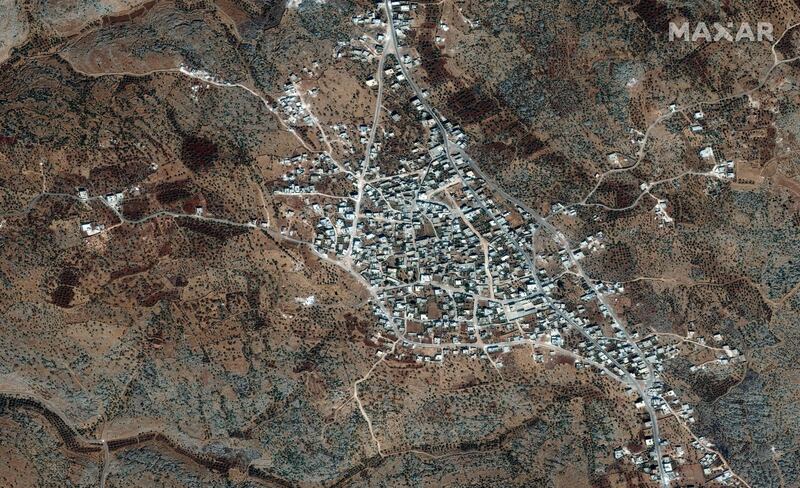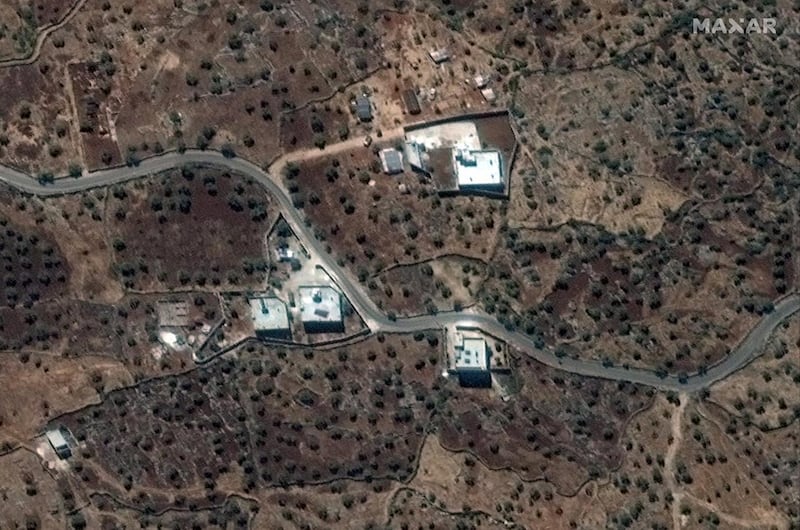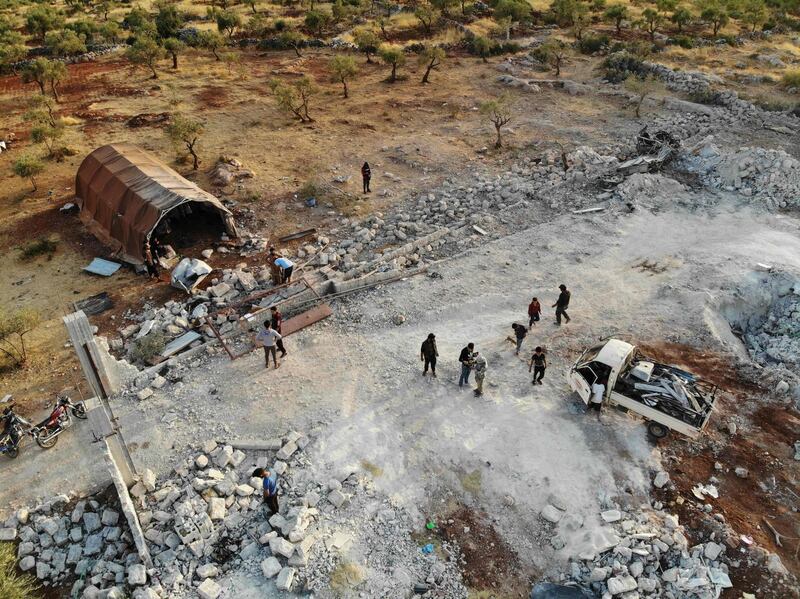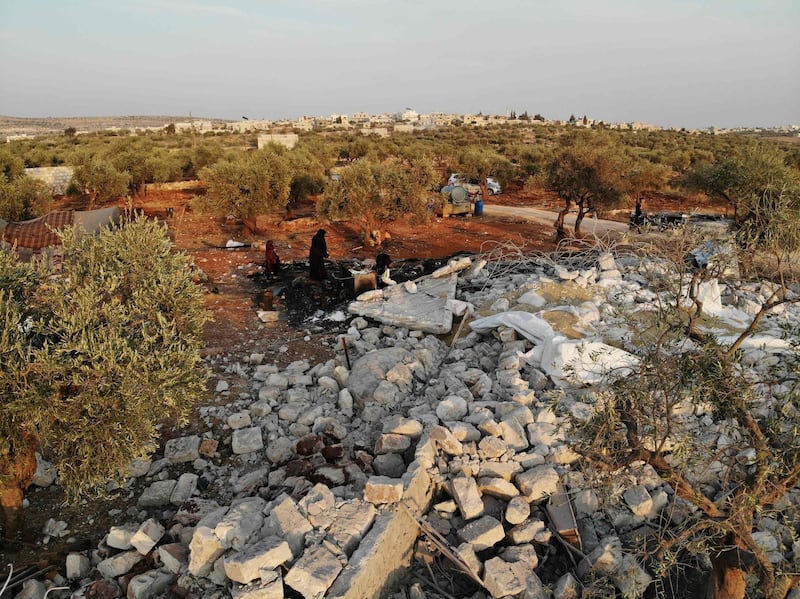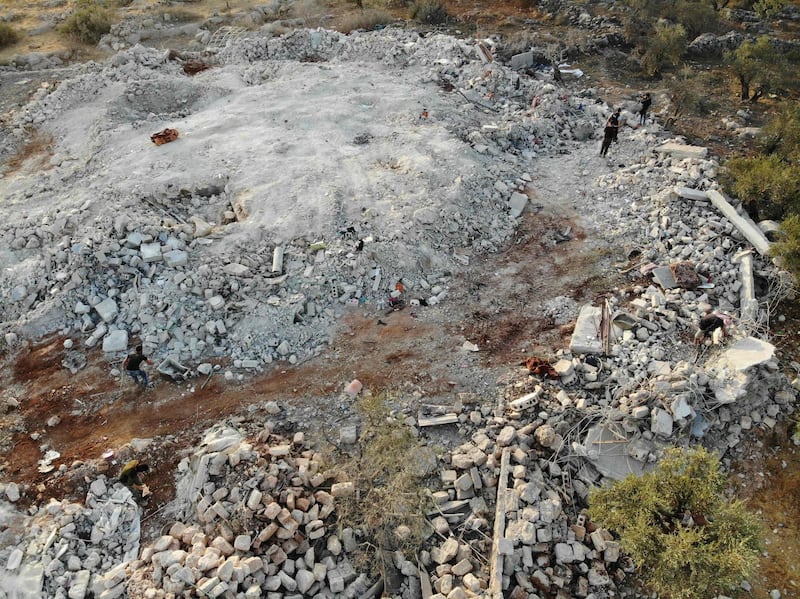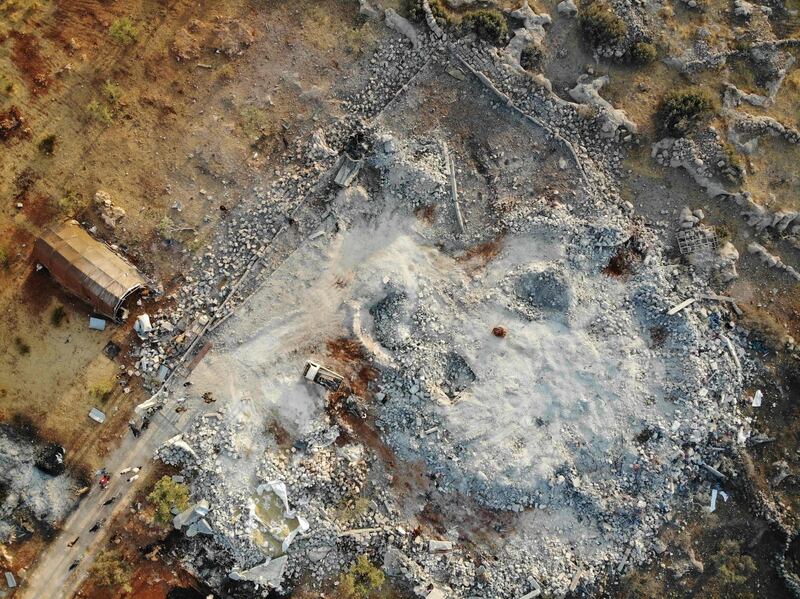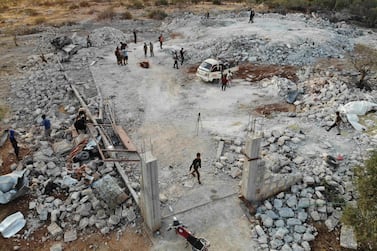In the dead of night on Saturday, US special forces entered a northern Syrian village to find their target: the world’s most wanted terrorist.
It started with eight helicopters flying low in the dark across hostile territory. The US had the location of Abu Bakr Al Baghdadi, the man who had been eluding western and Middle East security services for years.
The raid did not truly begin in Syria, but Iraq. Baghdad created a crack team that focused solely on capturing senior ISIS leaders in the year prior to the raid. The Iraqi National Intelligence Service was able to locate Al Baghdadi’s hideout in Idlib, passing the information to the US.
The terrorist leader, 48, and several of his associates were not far from Barisha, a village less than 20 kilometres from the Turkish border, when US Army Delta Forces – supported by intelligence from the CIA, Iraq and the Syrian Kurds – arrived.
They flew in CH-47 Chinook helicopters from an airbase in western Iraq before reaching Al Baghdadi’s hideout, which was believed to be the home of a senior leader of Hurras Al Din, an Al Qaeda-linked faction in Idlib, Syria’s last rebel-held bastion.
At least 100 US special operations forces flew in, enough to outnumber those on the ground, arriving after 11pm local time.
The attack occurred about five kilometres from the Turkish frontier and close to one of the main border crossings.
Abu Ahmad told AFP he was a few dozen metres away when he saw an “attacking force”, with the sound of gunfire ringing out as warplanes swooped overhead.
Someone speaking in Arabic called on his neighbour, apparently named Abu Mohammad, to hand himself over, before the forces moved in.
US forces then fired from above as soldiers rappelled from the helicopters. They surrounded the premises, calling for those inside to surrender, and a firefight broke out.
“A large crew of brilliant fighters ran out of those helicopters and blew holes into the side of the building” to avoid booby traps in any doors, US President Donald Trump said.
Al Baghdadi refused the calls to hand himself over and fled into a subterranean area.
Mr Trump said that Al Baghdadi, instead of surrendering, entered a tunnel. A military dog went into the tunnel and was injured.
The US leader said Al Baghdadi dragged three children with him into the tunnel. US Defence Secretary Mark Esper said the operation was to meant to ensure that Al Baghdadi was captured alive, but that would not be the case. Backed into a corner, the terrorist leader detonated an explosive device.
At least eight people were killed, including Al Baghdadi, his bodyguard, his personal assistant and two wives, according to officials.
The US military destroyed the compound with at least one air strike to prevent it from being used as a shrine to Al Baghdadi, leaving nothing but a crater at the site and torn and bloodstained clothes. Under a clear blue sky yesterday morning, the house was completely flattened into a pile of grey rubble.
The area was eventually cordoned off by Hayat Tahrir Al Sham, Syria’s former Al Qaeda affiliate, an extremist alliance that dominates most of Idlib province.
The US operation continued yesterday even though Al Baghdadi was dead.
The head of the Kurdish-led Syrian Democratic Forces, Mazloum Abdi, said ISIS spokesman Abu Hassan Al Muhajir was targeted in an operation in the village of Ain Al Bayda, near Jarablus in northern Syria, describing it as a continuation of the operation to capture Al Baghdadi.

